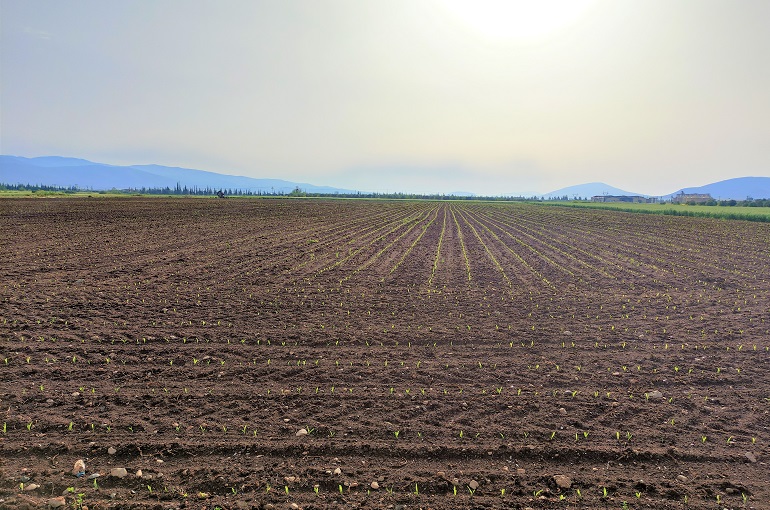The goal of the land preparation process is to create a level, well-structured soil seed bed that promotes optimal soil-seed contact. The land needs to be level in order to encourage water infiltration. The following is one method for preparing land:
- Conventional tillage
- It employs each type of land tillage technique, including ripping, plowing, discing, and harrowing. This technique typically costs a lot of money and encourages the degradation of soil texture.
- The first step in preparing the land is typically winter plowing, which is done in April or May after harvesting while the ground is still wet. Winter weeding, moisture conservation, pest management, and early weed and residue decomposition are all benefits of winter mowing. It makes use of an ox- or tractor-drawn plow.
- To manage weeds and provide a perfect seedbed, secondary tillage is carried out in September and October. It entails employing ox- or tractor-drawn equipment for harrowing, discing, and plowing.

- Conservation Agriculture (CA)
Small-Scale CA concentrates on small-scale manufacturing whereas Commercial CA concentrates on large-scale production.

- This refers to any type of tillage practice, which leaves at least 30% of the soil surface covered with residue. It follows three main principles namely; practicing minimal soil disturbance, protecting the soil by covering it with residue, and crop rotation. Emphasis is on residue retention and minimum soil disturbance.
- Tools used include the dibble stick which is used to open small planting stations, the jab-planter which opens small planting holes, applies basal fertilizer, and sows seed in one operation, and the specialized hand hoe called Chaka hoe for preparing planting basins. Ox-drawn implements include the ripper which is used for marking planting lines and the direct seeder combines row marking, basal fertilizer application, and planting in one operation. Larger versions of the ripper (sub-soiler) and the direct seeder are tractor-drawn.
- Land preparation in CA starts with winter weeding soon after harvesting in April/May. This reduces moisture loss through uptake by the weeds, controls pests and diseases, and adds residues for soil cover. Digging of basins and furrows and ripping then fallow from July to September. Application of lime, manure, compost, or compound fertilizer is done in October.
Planting
Time of planting
- It is preferable to plant early at the start of the rainy season because yields decline if planting is put off after the first week of November.
- Because of the hot circumstances’ acceleration of growth and early crop maturity, the reduction factor is substantially lower in the hotter lowveld regions.
Planting Date and Depth Guide
| Type | Time | Depth |
| Water planting | About 4 weeks before to the rains, from the end of September to the start of October, irrigate or water each planting station. Due to its extension of the growing season, it is ideal for late-maturing cultivars. | 50 mm |
| Dry planting | Plant in dry soil two to three weeks before the predicted start of the rainy season, usually starting in mid-October. | 75 mm |
| Rain planting | Within 24 hours, plant after the first real rains (20mm for sandy soils and 25+ mm for heavier soils). After an effective rain event, plant within two days and then halt until the following rains | 50 mm |


















